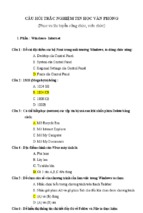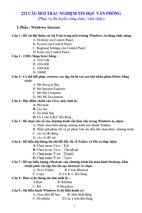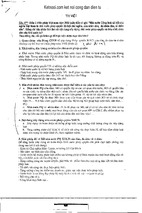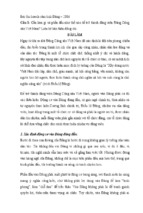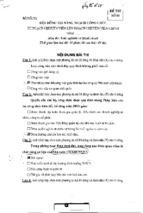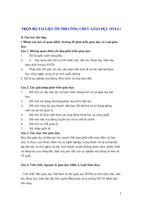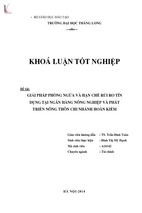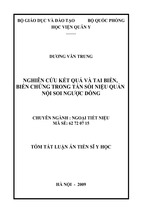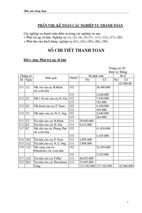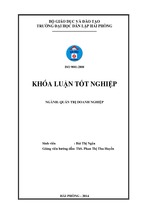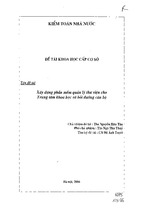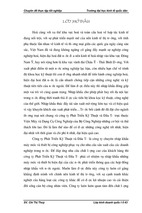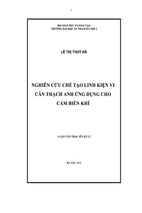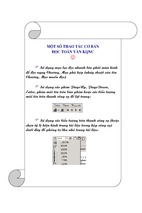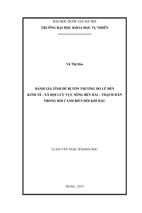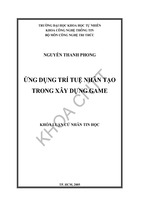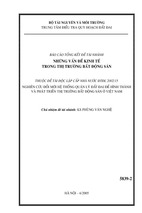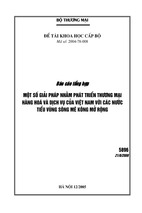Book 1 – Ethical and Professional
Standards, Quantitative Methods,
and Economics
Readings and Learning Outcome Statements .......................................................... 6
Study Session 1 – Ethical and Professional Standards ............................................ 14
Study Session 2 – Ethical and Professional Standards: Application....................... 110
Self-Test – Ethical and Professional Standards..................................................... 128
Study Session 3 – Quantitative Methods for Valuation ........................................ 138
Self-Test – Quantitative Methods for Valuation................................................... 254
Study Session 4 – Economics for Valuation ......................................................... 260
Self-Test – Economics for Valuation .................................................................... 354
Formulas ............................................................................................................ 357
Appendices ........................................................................................................ 361
Index ................................................................................................................. 370
Level 2 Book 1.indb 1
8/11/2010 4:17:57 PM
SCHWESERNOTES™ 2011 CFA LEVEL 2 BOOK 1: ETHICAL AND PROFESSIONAL STANDARDS,
QUANTITATIVE METHODS, AND ECONOMICS
©2010 Kaplan, Inc. All rights reserved.
Published in 2010 by Kaplan Schweser.
Printed in the United States of America.
ISBN: 978-1-4277-2747-3 / 1-4277-2747-3
PPN: 3200-0068
If this book does not have the hologram with the Kaplan Schweser logo on the back cover, it was distributed without permission of Kaplan
Schweser, a Division of Kaplan, Inc., and is in direct violation of global copyright laws. Your assistance in pursuing potential violators of this
law is greatly appreciated.
Required CFA Institute® disclaimer: “CFA® and Chartered Financial Analyst® are trademarks owned by CFA Institute. CFA Institute
(formerly the Association for Investment Management and Research) does not endorse, promote, review, or warrant the accuracy of the
products or services offered by Kaplan Schweser.”
Certain materials contained within this text are the copyrighted property of CFA Institute. The following is the copyright disclosure for
these materials: “Copyright, 2011, CFA Institute. Reproduced and republished from 2011 Learning Outcome Statements, Level 1, 2,
and 3 questions from CFA® Program Materials, CFA Institute Standards of Professional Conduct, and CFA Institute’s Global Investment
Performance Standards with permission from CFA Institute. All Rights Reserved.”
These materials may not be copied without written permission from the author. The unauthorized duplication of these notes is a violation of
global copyright laws and the CFA Institute Code of Ethics. Your assistance in pursuing potential violators of this law is greatly appreciated.
Disclaimer: The SchweserNotes should be used in conjunction with the original readings as set forth by CFA Institute in their 2011 CFA Level
2 Study Guide. The information contained in these Notes covers topics contained in the readings referenced by CFA Institute and is believed
to be accurate. However, their accuracy cannot be guaranteed nor is any warranty conveyed as to your ultimate exam success. The authors of
the referenced readings have not endorsed or sponsored these Notes.
Level 2 Book 1.indb 2
8/11/2010 4:17:57 PM
Welcome to the 2011 Level 2
SchweserNotes™
Thank you for trusting Kaplan Schweser to help you reach your goals. We are all very
pleased to be able to help you prepare for the Level 2 CFA Exam. In this introduction,
I want to explain the resources included with the SchweserNotes, suggest how you
can best use Schweser materials to prepare for the exam, and direct you toward other
educational resources you will find helpful as you study for the exam.
Besides the SchweserNotes themselves, there are many educational resources available at
Schweser.com. Just log in using the individual username and password that you received
when you purchased the SchweserNotes.
SchweserNotes T M
These consist of five volumes that include complete coverage of all 18 Study Sessions
and all Learning Outcome Statements (LOS) with examples, Concept Checkers
(multiple-choice questions for every topic review), and Challenge Problems for many
topic reviews to help you master the material and check your progress. At the end of
each major topic area, we include a Self-test. Self-test questions are created to be examlike in format and difficulty in order for you to evaluate how well your study of each
topic has prepared you for the actual exam. The Level 2 SchweserNotes Package also
includes a sixth volume, the Level 1 Refresher, a review of important Level 1 material.
Practice Questions
To retain what you learn, it is important that you quiz yourself often. We offer CD,
download, and online versions of the SchweserPro™ QBank, which contains thousands
of Level 2 practice questions, item sets, and explanations. Quizzes are available for each
LOS, topic, or Study Session. Build your own exams by specifying the topics and the
number of questions you choose.
Practice Exams
Schweser offers six full 6-hour practice exams. Practice Exams Volume 1 and Volume 2
each contain three full 120-question exams. These are important tools for gaining the
speed and skills you will need to pass the exam. Each book contains answers with full
explanations for self-grading and evaluation. By entering your answers at Schweser.com,
you can use our Performance Tracker to find out how you have performed compared to
other Schweser Level 2 candidates.
Schweser Library
We have created reference videos, some of which are available to all SchweserNotes
purchasers. Schweser Library volumes range from 20 to 60 minutes in length and cover
such topics as: “Introduction to Item Sets,” “Hypothesis Testing,” “Foreign Exchange
Basics,” “Ratio Analysis,” and “Forward Contracts.” The full Schweser Library is
included with our 16-week live or online classes and with our video instruction (online
or CDs).
©2010 Kaplan, Inc.
Level 2 Book 1.indb 3
Page 3
8/11/2010 4:17:57 PM
Welcome to the 2011 Level 2 SchweserNotes ™
Online Schweser Study Planner
Use your Online Access to tell us when you will start and what days of the week you can
study. The online Schweser Study Planner will create a study plan just for you, breaking
each study session into daily and weekly tasks to keep you on track and help you
monitor your progress through the curriculum.
Additional Resources
Purchasers of the Essential Self-Study or Premium Instruction Packages also receive
access to our Instructor-led Office Hours. Office Hours allow you to get your questions
about the curriculum answered in real time and to see others’ questions (and instructor
answers) as well. Office Hours is a text-based live interactive online chat with our team
of Level 2 experts. Archives of previous Office Hours sessions can be sorted by topic or
date and are posted shortly after each session.
The Level 2 CFA exam is a formidable challenge (70 topic reviews and 475+ Learning
Outcome Statements), and you must devote considerable time and effort to be properly
prepared. There is no shortcut! You must learn the material, know the terminology and
techniques, understand the concepts, and be able to answer 120 questions quickly and
(at least 70%) correctly. Fifteen to 20 hours per week for 20 weeks is a good estimate
of the study time required on average, but some candidates will need more or less time,
depending on their individual backgrounds and experience.
To help you master this material and be well prepared for the CFA Exam, we offer
several other educational resources, including:
Live Weekly Classroom Programs
We offer weekly classroom programs around the world. Please check Schweser.com for
locations, dates, and availability.
16-Week Online Classes
Our 16-Week Online Classes are available at New York time (6:30–9:30 pm) or London
time (6:00–9:00 pm) beginning in January. The approximate schedule for the 16-Week
Online Classes (3-hour sessions) is as follows:
Class #
1) Exam Intro/Ethical Standards SS 1, 2
2) Quantitative Methods SS 3
3) Economics for Valuation SS 4
4) Financial Reporting & Analysis SS 5
5) Financial Reporting & Analysis SS 6
6) Financial Reporting & Analysis SS 7
7) Corporate Finance SS 8
8) Corporate Finance & Equity SS 9, 10
Class #
9) Equity SS 11, 12
10) Equity SS 12
11) Alternative Asset Valuation SS 13
12) Fixed Income SS 14
13) Fixed Income SS 15
14) Derivatives SS 16
15) Derivatives & Portfolio Management SS 17
16) Portfolio Management SS 18
Archived classes are available for viewing at any time throughout the season. Candidates
enrolled in the 16-Week Online Classes also have full access to supplemental on-demand
video instruction in the Schweser Library and an e-mail address to use to send questions
to the instructor at any time.
Page 4
Level 2 Book 1.indb 4
©2010 Kaplan, Inc.
8/11/2010 4:17:57 PM
Welcome to the 2011 Level 2 SchweserNotes ™
Late Season Review
Whether you use self-study or in-class, online, or video instruction to learn the CFA
curriculum, a late-season review and exam practice can make all the difference. Our
most complete late-season review courses are our residence programs in Windsor,
Ontario (WindsorWeek) and Dallas/Fort Worth, Texas (DFW 5-day program). Each
covers the entire curriculum at all three levels. We also offer 3-day Exam Workshops in
many cities (and online) that combine curriculum review with an equal component of
hands-on practice with hundreds of questions and problem-solving techniques. Please
visit us at Schweser.com for complete listings and course descriptions for all our lateseason review offerings.
Mock Exam and Multimedia Tutorial
On May 21, 2011, the Schweser Mock Exam will be offered live in many cities around
the world and as an online exam as well. The optional Multimedia Tutorial provides
extended explanation and topic tutorials to get you exam-ready in areas where you
miss questions on the Mock Exam. Please visit Schweser.com for a listing of cities and
locations.
How to Succeed
There are no shortcuts; depend on the fact that CFA Institute will test you in a way
that will reveal how well you know the Level 2 curriculum. You should begin early and
stick to your study plan. You should first read the SchweserNotes and complete the
Concept Checkers and Challenge Problems for each topic review. You should prepare
for and attend a live class, an online class, or a study group each week. You should take
quizzes often using SchweserPro Qbank and go back to review previous topics and Study
Sessions as well. At the end of each topic area, you should take the Self-test to check
your progress. You should finish the overall curriculum at least four weeks (preferably
five weeks) before the Level 2 exam so that you have sufficient time for Practice Exams
and for further review of those topics that you have not yet mastered.
I would like to thank Kevin Rygg, CFA Content Specialist; Stephanie Downey, Director
of Print Production; and Jeff Faas, Lead Editor, for their contributions to the 2011
Level 2 SchweserNotes for the CFA Exam.
Best regards,
Bijesh Tolia
Dr. Bijesh Tolia, CFA
VP and CFA Level 2 Manager
Kaplan Schweser
©2010 Kaplan, Inc.
Level 2 Book 1.indb 5
Page 5
8/11/2010 4:17:57 PM
Readings and
Learning Outcome Statements
Readings
The following material is a review of the Ethical and Professional Standards, Quantitative
Methods, and Economics principles designed to address the learning outcome statements set
forth by CFA Institute.
STUDY SESSION 1
Reading Assignments
Ethical and Professional Standards, CFA Program Curriculum, Volume 1, Level 2
(CFA Institute, 2011)
1.
2.
3.
4.
Code of Ethics and Standards of Professional Conduct
Guidance for Standards I–VII
CFA Institute Soft Dollar Standards
CFA Institute Research Objectivity Standards
page 14
page 14
page 92
page 101
STUDY SESSION 2
Reading Assignments
Ethical and Professional Standards, CFA Program Curriculum, Volume 1, Level 2
(CFA Institute, 2011)
5.
6.
7.
8.
9.
10.
The Glenarm Company
Preston Partners
Super Selection
Trade Allocation: Fair Dealing and Disclosure
Changing Investment Objectives
Prudence in Perspective
page 110
page 112
page 115
page 118
page 120
page 121
STUDY SESSION 3
Reading Assignments
Quantitative Methods for Valuation, CFA Program Curriculum, Volume 1, Level 2
(CFA Institute, 2011)
11.
12.
13.
Page 6
Level 2 Book 1.indb 6
Correlation and Regression
Multiple Regression and Issues in Regression Analysis
Time-Series Analysis
page 138
page 172
page 218
©2010 Kaplan, Inc.
8/11/2010 4:17:57 PM
Book 1 – Ethical & Professional Standards, Quantitative Methods, and Economics
Readings and Learning Outcome Statements
STUDY SESSION 4
Reading Assignments
Economics for Valuation, CFA Program Curriculum, Volume 1, Level 2
(CFA Institute, 2011)
14.
15.
16.
17.
18.
19.
20.
Economic Growth
Regulation and Antitrust Policy in a Globalized Economy
Trading with the World
The Exchange Rate and the Balance of Payments
Currency Exchange Rates
Foreign Exchange Parity Relations
Measuring Economic Activity
page 260
page 278
page 285
page 296
page 307
page 327
page 348
Learning Outcome Statements (LOS)
The CFA Institute Learning Outcome Statements are listed below. These are repeated in each
topic review; however, the order may have been changed in order to get a better fit with the
flow of the review.
STUDY SESSION 1
The topical coverage corresponds with the following CFA Institute assigned reading:
1. Code of Ethics and Standards of Professional Conduct
The candidate should be able to:
a. state the six components of the Code of Ethics and the seven Standards of
Professional Conduct. (page 14)
b. explain the ethical responsibilities required by the Code and Standards.
(page 15)
The topical coverage corresponds with the following CFA Institute assigned reading:
2. Guidance for Standards I–VII
The candidate should be able to:
a. demonstrate a thorough knowledge of the Code of Ethics and Standards of
Professional Conduct by applying the Code and Standards to specific situations.
(page 18)
b. recommend practices and procedures designed to prevent violations of the Code
of Ethics and Standards of Professional Conduct. (page 18)
The topical coverage corresponds with the following CFA Institute assigned reading:
3. C FA Institute Soft Dollar Standards
The candidate should be able to:
a. define soft-dollar arrangements and state the general principles of the Soft
Dollar Standards. (page 92)
b. critique company soft-dollar practices and policies. (page 93)
c. determine whether a product or service qualifies as “permissible research” that
can be purchased with client brokerage. (page 96)
©2010 Kaplan, Inc.
Level 2 Book 1.indb 7
Page 7
8/11/2010 4:17:57 PM
Book 1 – Ethical & Professional Standards, Quantitative Methods, and Economics
Readings and Learning Outcome Statements
The topical coverage corresponds with the following CFA Institute assigned reading:
4. C FA Institute Research Objectivity Standards
The candidate should be able to:
a. explain the objectives of the Research Objectivity Standards. (page 101)
b. critique company policies and practices related to research objectivity, and
distinguish between changes required and changes recommended for compliance
with the Research Objectivity Standards. (page 101)
STUDY SESSION 2
The topical coverage corresponds with the following CFA Institute assigned reading:
5. The Glenarm Company
6. Preston Partners
7. Super Selection
For each of these cases, the candidate should be able to:
a. critique the practices and policies presented. (pages 110, 112, 115)
b. explain the appropriate action to take in response to conduct that violates the
CFA Institute Code of Ethics and Standards of Professional Conduct.
(pages 110, 112, 115)
The topical coverage corresponds with the following CFA Institute assigned reading:
8. Trade Allocation: Fair Dealing and D isclosure
The candidate should be able to:
a. critique trade allocation practices, and determine whether compliance exists with
the CFA Institute Standards of Professional Conduct addressing fair dealing and
client loyalty. (page 118)
b. discuss appropriate actions to take in response to trade allocation practices that
do not adequately respect client interests. (page 119)
The topical coverage corresponds with the following CFA Institute assigned reading:
9. Changing Investment Objectives
The candidate should be able to:
a. critique the disclosure of investment objectives and basic policies and determine
whether they comply with the CFA Institute Standards of Professional Conduct.
(page 120)
b. discuss appropriate actions needed to ensure adequate disclosure of the
investment process. (page 120)
The topical coverage corresponds with the following CFA Institute assigned reading:
10. Prudence in Perspective
The candidate should be able to:
a. explain the basic principles of the new Prudent Investor Rule. (page 121)
b. explain the general fiduciary standards to which a trustee must adhere.
(page 122)
c. differentiate between the old Prudent Man Rule and the new Prudent Investor
Rule. (page 123)
d. explain the key factors that a trustee should consider when investing and
managing trust assets. (page 123)
Page 8
Level 2 Book 1.indb 8
©2010 Kaplan, Inc.
8/11/2010 4:17:57 PM
Book 1 – Ethical & Professional Standards, Quantitative Methods, and Economics
Readings and Learning Outcome Statements
STUDY SESSION 3
The topical coverage corresponds with the following CFA Institute assigned reading:
11. Correlation and Regression
The candidate should be able to:
a. calculate and interpret a sample covariance and a sample correlation coefficient,
and interpret a scatter plot. (page 138)
b. explain the limitations to correlation analysis, including outliers and spurious
correlation. (page 142)
c. formulate a test of the hypothesis that the population correlation coefficient
equals zero, and determine whether the hypothesis is rejected at a given level of
significance. (page 143)
d. distinguish between the dependent and independent variables in a linear
regression. (page 144)
e. explain the assumptions underlying linear regression, and interpret the
regression coefficients. (page 146)
f. calculate and interpret the standard error of estimate, the coefficient of
determination, and a confidence interval for a regression coefficient. (page 150)
g. formulate a null and alternative hypothesis about a population value of a
regression coefficient, select the appropriate test statistic, and determine whether
the null hypothesis is rejected at a given level of significance. (page 152)
h. calculate a predicted value for the dependent variable, given an estimated
regression model and a value for the independent variable, and calculate and
interpret a confidence interval for the predicted value of a dependent variable.
(page 153)
i. describe the use of analysis of variance (ANOVA) in regression analysis, interpret
ANOVA results, and calculate and interpret an F-statistic. (page 154)
j. discuss the limitations of regression analysis. (page 159)
The topical coverage corresponds with the following CFA Institute assigned reading:
12. Multiple Regression and Issues in Regression Analysis
The candidate should be able to:
a. formulate a multiple regression equation to describe the relation between a
dependent variable and several independent variables, determine the statistical
significance of each independent variable, and interpret the estimated
coefficients and their p-values. (page 173)
b. formulate a null and an alternative hypothesis about the population value of a
regression coefficient, calculate the value of the test statistic, determine whether
to reject the null hypothesis at a given level of significance by using a one-tailed
or two-tailed test, and interpret the results of the test. (page 175)
c. calculate and interpret 1) a confidence interval for the population value of a
regression coefficient and 2) a predicted value for the dependent variable, given
an estimated regression model and assumed values for the independent variables.
(page 179)
d. explain the assumptions of a multiple regression model. (page 181)
e. calculate and interpret the F-statistic, and discuss how it is used in regression
analysis. (page 181)
f. distinguish between and interpret the R2 and adjusted R2 in multiple regression.
(page 183)
©2010 Kaplan, Inc.
Level 2 Book 1.indb 9
Page 9
8/11/2010 4:17:57 PM
Book 1 – Ethical & Professional Standards, Quantitative Methods, and Economics
Readings and Learning Outcome Statements
g. infer how well a regression model explains the dependent variable by analyzing
the output of the regression equation and an ANOVA table. (page 185)
h. formulate a multiple regression equation by using dummy variables to represent
qualitative factors, and interpret the coefficients and regression results.
(page 189)
i. discuss the types of heteroskedasticity and the effects of heteroskedasticity and
serial correlation on statistical inference. (page 193)
j. describe multicollinearity, and discuss its causes and effects in regression
analysis. (page 199)
k. discuss the effects of model misspecification on the results of a regression
analysis, and explain how to avoid the common forms of misspecification.
(page 202)
l. discuss models with qualitative dependent variables. (page 206)
m. interpret the economic meaning of the results of multiple regression analysis and
critique a regression model and its results. (page 206)
The topical coverage corresponds with the following CFA Institute assigned reading:
13. Time-Series Analysis
The candidate should be able to:
a. calculate and evaluate the predicted trend value for a time series, modeled as
either a linear trend or a log-linear trend, given the estimated trend coefficients.
(page 218)
b. discuss the factors that determine whether a linear or a log-linear trend should
be used with a particular time series, and evaluate the limitations of trend
models. (page 224)
c. explain the requirement for a time series to be covariance stationary, and discuss
the significance of a series that is not stationary. (page 225)
d. discuss the structure of an autoregressive (AR) model of order p, and calculate
one- and two-period-ahead forecasts given the estimated coefficients. (page 226)
e. explain how autocorrelations of the residuals can be used to test whether the
autoregressive model fits the time series. (page 227)
f. explain mean reversion, and calculate a mean-reverting level. (page 228)
g. contrast in-sample and out-of-sample forecasts, and compare the forecasting
accuracy of different time-series models based on the root mean squared error
criterion. (page 229)
h. discuss the instability of coefficients of time-series models. (page 230)
i. describe the characteristics of random walk processes, and contrast them to
covariance stationary processes. (page 231)
j. discuss the implications of unit roots for time-series analysis, explain when unit
roots are likely to occur and how to test for them, and demonstrate how a time
series with a unit root can be transformed so it can be analyzed with an AR
model. (page 232)
k. discuss the steps of the unit root test for nonstationarity, and explain the relation
of the test to autoregressive time-series models. (page 232)
l. discuss how to test and correct for seasonality in a time-series model, and
calculate and interpret a forecasted value using an AR model with a seasonal lag.
(page 235)
m. explain autoregressive conditional heteroskedasticity (ARCH), and discuss how
ARCH models can be applied to predict the variance of a time series. (page 239)
n. explain how time-series variables should be analyzed for nonstationarity and/or
cointegration before use in a linear regression. (page 240)
Page 10
Level 2 Book 1.indb 10
©2010 Kaplan, Inc.
8/11/2010 4:17:57 PM
Book 1 – Ethical & Professional Standards, Quantitative Methods, and Economics
Readings and Learning Outcome Statements
o. select and justify the choice of a particular time-series model from a group of
models. (page 242)
STUDY SESSION 4
The topical coverage corresponds with the following CFA Institute assigned reading:
14. Economic Growth
The candidate should be able to:
a. define the sources of economic growth, and discuss the preconditions for
economic growth. (page 261)
b. discuss how the one-third rule can be used to explain the contributions of labor
and technological change to growth in labor productivity. (page 262)
c. discuss how faster economic growth can be achieved by increasing the growth of
physical capital, technological advances, and investment in human capital.
(page 265)
d. compare and contrast classical growth theory, neoclassical growth theory, and
new growth theory. (page 265)
The topical coverage corresponds with the following CFA Institute assigned reading:
15. Regulation and Antitrust Policy in a Globalized Economy
The candidate should be able to:
a. explain the rationale for government regulation in the form of 1) economic
regulation of natural monopolies and 2) social regulation of nonmonopolistic
industries. (page 278)
b. discuss the potential benefits and possible negative side effects of social
regulation. (page 280)
c. differentiate between the capture hypothesis and the share-the-gains, share-thepains theory of regulator behavior. (page 280)
The topical coverage corresponds with the following CFA Institute assigned reading:
16. Trading with the World
The candidate should be able to:
a. explain comparative advantage and how countries can gain from international
trade. (page 285)
b. compare and contrast tariffs, nontariff barriers, quotas, and voluntary export
restraints. (page 288)
c. critique the arguments for trade restrictions. (page 290)
The topical coverage corresponds with the following CFA Institute assigned reading:
17. The Exchange Rate and the Balance of Payments
The candidate should be able to:
a. define an exchange rate, and differentiate between the nominal exchange rate
and the real exchange rate. (page 296)
b. explain the factors that influence supply and demand in the foreign exchange
market. (page 297)
c. discuss how the supply and demand for a currency changes the exchange rate.
(page 299)
d. differentiate between interest rate parity and purchasing power parity.
(page 300)
e. describe the balance of payments accounts. (page 301)
©2010 Kaplan, Inc.
Level 2 Book 1.indb 11
Page 11
8/11/2010 4:17:58 PM
Book 1 – Ethical & Professional Standards, Quantitative Methods, and Economics
Readings and Learning Outcome Statements
f.
describe the following exchange rate policies: flexible exchange rates, fixed
exchange rates, and crawling pegs. (page 302)
The topical coverage corresponds with the following CFA Institute assigned reading:
18. Currency Exchange Rates
The candidate should be able to:
a. define direct and indirect methods of foreign exchange quotations, and convert
direct (indirect) foreign exchange quotations into indirect (direct) foreign
exchange quotations. (page 307)
b. calculate and interpret the spread on a foreign currency quotation, and explain
how spreads on foreign currency quotations can differ as a result of market
conditions, bank/dealer positions, and trading volume. (page 309)
c. calculate and interpret currency cross rates, given two spot exchange quotations
involving three currencies. (page 310)
d. calculate the profit on a triangular arbitrage opportunity, given the bid-ask
quotations for the currencies of three countries involved in the arbitrage.
(page 312)
e. distinguish between the spot and forward markets for foreign exchange.
(page 313)
f. calculate and interpret the spread on a forward foreign currency quotation, and
explain how spreads on forward foreign currency quotations can differ as a result
of market conditions, bank/dealer positions, trading volume, and maturity/
length of contract. (page 314)
g. calculate and interpret a forward discount or premium and express it as an
annualized rate. (page 315)
h. explain interest rate parity, and illustrate covered interest arbitrage. (page 316)
i. distinguish between spot and forward transactions, calculate the annualized
forward premium/discount for a given currency, and infer whether the currency
is “strong” or “weak.” (page 318)
The topical coverage corresponds with the following CFA Institute assigned reading:
19. Foreign Exchange Parity Relations
The candidate should be able to:
a. explain how exchange rates are determined in a flexible (or floating) exchange
rate system. (page 327)
b. explain the role of each component of the balance of payments accounts.
(page 327)
c. explain how current account deficits or surpluses and financial account deficits
or surpluses affect an economy. (page 328)
d. describe the factors that cause a nation’s currency to appreciate or depreciate.
(page 328)
e. explain how monetary and fiscal policies affect the exchange rate and balance of
payments components. (page 329)
f. describe a fixed exchange rate and a pegged exchange rate system. (page 330)
g. discuss absolute purchasing power parity and relative purchasing power parity.
(page 331)
h. calculate the end-of-period exchange rate implied by purchasing power parity,
given the beginning-of-period exchange rate and the inflation rates. (page 331)
i. discuss the international Fisher relation. (page 333)
Page 12
Level 2 Book 1.indb 12
©2010 Kaplan, Inc.
8/11/2010 4:17:58 PM
Book 1 – Ethical & Professional Standards, Quantitative Methods, and Economics
Readings and Learning Outcome Statements
j.
calculate the real interest rate, given nominal interest rates and expected inflation
rates, using the international Fisher relation and its linear approximation.
(page 333)
k. discuss the theory of uncovered interest rate parity, and explain the theory’s
relation to other exchange rate parity theories. (page 335)
l. calculate the expected change in the exchange rate, given interest rates and the
assumption that uncovered interest rate parity holds. (page 335)
m. discuss the foreign exchange expectation relation between the forward exchange
rate and the expected exchange rate. (page 337)
The topical coverage corresponds with the following CFA Institute assigned reading:
20. Measuring Economic Activity
The candidate should be able to:
a. distinguish between the measures of economic activity (i.e., gross domestic
product, gross national income, and net national income), including their
components. (page 348)
b. differentiate between GDP at market prices and GDP at factor cost. (page 349)
c. differentiate between current and constant prices, and describe the GDP
deflator. (page 350)
©2010 Kaplan, Inc.
Level 2 Book 1.indb 13
Page 13
8/11/2010 4:17:58 PM
The following is a review of the Ethical and Professional Standards principles designed to address the learning
outcome statements set forth by CFA Institute®. This topic is also covered in:
CFA Institute Code of Ethics and
Standards of Professional Conduct
Guidance for Standards I–VII
Study Session 1
Exam Focus
In addition to reading this review of the ethics material, we strongly recommend that
all candidates for the CFA® examination read the Standards of Practice Handbook 10th
Edition (2010) multiple times. As a Level 2 CFA candidate, it is your responsibility to
comply with the Code and Standards. The complete Code and Standards are reprinted in
Volume 1 of the CFA Program Curriculum.
LOS 1.a: State the six components of the Code of Ethics and the seven
Standards of Professional Conduct.
Code of Ethics
Members of CFA Institute [including Chartered Financial Analyst® (CFA®)
charterholders] and candidates for the CFA designation (“Members and Candidates”)
must:1
s
s
s
s
s
s
Act with integrity, competence, diligence, respect, and in an ethical manner with
the public, clients, prospective clients, employers, employees, colleagues in the
investment profession, and other participants in the global capital markets.
Place the integrity of the investment profession and the interests of clients above
their own personal interests.
Use reasonable care and exercise independent professional judgment when
conducting investment analysis, making investment recommendations, taking
investment actions, and engaging in other professional activities.
Practice and encourage others to practice in a professional and ethical manner that
will reflect credit on themselves and the profession.
Promote the integrity of, and uphold the rules governing, capital markets.
Maintain and improve their professional competence and strive to maintain and
improve the competence of other investment professionals.
The Standards of Professional Conduct
I:
II:
III:
1.
Page 14
Level 2 Book 1.indb 14
Professionalism
Integrity of Capital Markets
Duties to Clients
Copyright 2010, CFA Institute. Reproduced and republished from “The Code of Ethics,”
from Standards of Practice Handbook, 10th Ed., 2010, with permission from CFA Institute.
All rights reserved.
©2010 Kaplan, Inc.
8/11/2010 4:17:58 PM
Study Session 1
Cross-Reference to CFA Institute Assigned Readings #1 & 2 – Standards of Practice Handbook
IV:
V:
VI:
VII:
Duties to Employers
Investment Analysis, Recommendations, and Actions
Conflicts of Interest
Responsibilities as a CFA Institute Member or CFA Candidate
LOS 1.b: Explain the ethical responsibilities required by the Code and
Standards.
Standards of Professional Conduct2
I.
PRO FESSI O N ALISM
A. Knowledge of the Law. Members and Candidates must understand and
comply with all applicable laws, rules, and regulations (including the CFA
Institute Code of Ethics and Standards of Professional Conduct) of any
government, regulatory organization, licensing agency, or professional
association governing their professional activities. In the event of conflict,
Members and Candidates must comply with the more strict law, rule, or
regulation. Members and Candidates must not knowingly participate or assist
in any violation of laws, rules, or regulations and must disassociate themselves
from any such violation.
B. Independence and Objectivity. Members and Candidates must use reasonable
care and judgment to achieve and maintain independence and objectivity in
their professional activities. Members and Candidates must not offer, solicit, or
accept any gift, benefit, compensation, or consideration that reasonably could
be expected to compromise their own or another’s independence and
objectivity.
C. Misrepresentation. Members and Candidates must not knowingly make any
misrepresentations relating to investment analysis, recommendations, actions,
or other professional activities.
D. Misconduct. Members and Candidates must not engage in any professional
conduct involving dishonesty, fraud, or deceit or commit any act that reflects
adversely on their professional reputation, integrity, or competence.
II.
I N T E GRI T Y O F C API TAL M ARK E TS
A. Material Nonpublic Information. Members and Candidates who possess
material nonpublic information that could affect the value of an investment
must not act or cause others to act on the information.
B. Market Manipulation. Members and Candidates must not engage in practices
that distort prices or artificially inflate trading volume with the intent to
mislead market participants.
2.
Ibid.
©2010 Kaplan, Inc.
Level 2 Book 1.indb 15
Page 15
8/11/2010 4:17:58 PM
Study Session 1
Cross-Reference to CFA Institute Assigned Readings #1 & 2 – Standards of Practice Handbook
Study Session 1
III.
D U T IES T O C LIE N TS
A. Loyalty, Prudence, and Care. Members and Candidates have a duty of loyalty
to their clients and must act with reasonable care and exercise prudent
judgment. Members and Candidates must act for the benefit of their clients
and place their clients’ interests before their employer’s or their own interests.
B. Fair Dealing. Members and Candidates must deal fairly and objectively with
all clients when providing investment analysis, making investment
recommendations, taking investment action, or engaging in other professional
activities.
C. Suitability.
1. When Members and Candidates are in an advisory relationship with a
client, they must:
a. Make a reasonable inquiry into a client’s or prospective clients’
investment experience, risk and return objectives, and financial
constraints prior to making any investment recommendation or taking
investment action and must reassess and update this information
regularly.
b. Determine that an investment is suitable to the client’s financial
situation and consistent with the client’s written objectives, mandates,
and constraints before making an investment recommendation or
taking investment action.
c. Judge the suitability of investments in the context of the client’s total
portfolio.
2. When Members and Candidates are responsible for managing a portfolio to
a specific mandate, strategy, or style, they must make only investment
recommendations or take investment actions that are consistent with the
stated objectives and constraints of the portfolio.
D. Performance Presentation. When communicating investment performance
information, Members or Candidates must make reasonable efforts to ensure
that it is fair, accurate, and complete.
E. Preservation of Confidentiality. Members and Candidates must keep
information about current, former, and prospective clients confidential unless:
1. The information concerns illegal activities on the part of the client or
prospective client,
2. Disclosure is required by law, or
3. The client or prospective client permits disclosure of the information.
Page 16
Level 2 Book 1.indb 16
©2010 Kaplan, Inc.
8/11/2010 4:17:58 PM
Study Session 1
Cross-Reference to CFA Institute Assigned Readings #1 & 2 – Standards of Practice Handbook
IV.
D U T IES T O E MPL OYERS
A. Loyalty. In matters related to their employment, Members and Candidates
must act for the benefit of their employer and not deprive their employer of the
advantage of their skills and abilities, divulge confidential information, or
otherwise cause harm to their employer.
B. Additional Compensation Arrangements. Members and Candidates must not
accept gifts, benefits, compensation, or consideration that competes with, or
might reasonably be expected to create a conflict of interest with, their
employer’s interest unless they obtain written consent from all parties involved.
C. Responsibilities of Supervisors. Members and Candidates must make
reasonable efforts to detect and prevent violations of applicable laws, rules,
regulations, and the Code and Standards by anyone subject to their supervision
or authority.
V.
I N VES T M E N T A N ALYSIS, RE C O M M E N D AT I O N S, A N D AC T I O N S
A. D iligence and Reasonable Basis. Members and Candidates must:
1. Exercise diligence, independence, and thoroughness in analyzing
investments, making investment recommendations, and taking investment
actions.
2. Have a reasonable and adequate basis, supported by appropriate research
and investigation, for any investment analysis, recommendation, or action.
B. Communication with Clients and Prospective Clients. Members and
Candidates must:
1. Disclose to clients and prospective clients the basic format and general
principles of the investment processes used to analyze investments, select
securities, and construct portfolios and must promptly disclose any changes
that might materially affect those processes.
2. Use reasonable judgment in identifying which factors are important to their
investment analyses, recommendations, or actions and include those factors
in communications with clients and prospective clients.
3. Distinguish between fact and opinion in the presentation of investment
analysis and recommendations.
C. Record Retention. Members and Candidates must develop and maintain
appropriate records to support their investment analysis, recommendations,
actions, and other investment-related communications with clients and
prospective clients.
©2010 Kaplan, Inc.
Level 2 Book 1.indb 17
Page 17
8/11/2010 4:17:58 PM
Study Session 1
Cross-Reference to CFA Institute Assigned Readings #1 & 2 – Standards of Practice Handbook
VI.
C O N FLI C TS O F I N T ERES T
Study Session 1
A. D isclosure of Conflicts. Members and Candidates must make full and fair
disclosure of all matters that could reasonably be expected to impair their
independence and objectivity or interfere with respective duties to their clients,
prospective clients, and employer. Members and Candidates must ensure that
such disclosures are prominent, are delivered in plain language, and
communicate the relevant information effectively.
B. Priority of Transactions. Investment transactions for clients and employers
must have priority over investment transactions in which a Member or
Candidate is the beneficial owner.
C. Referral Fees. Members and Candidates must disclose to their employer,
clients, and prospective clients, as appropriate, any compensation,
consideration, or benefit received by, or paid to, others for the recommendation
of products or services.
VII.
RESP O N SIBILI T IES AS A C FA I N S T I T U T E M E M BER O R C FA
C A N D I D AT E
A. Conduct as Members and Candidates in the C FA Program. Members and
Candidates must not engage in any conduct that compromises the reputation
or integrity of CFA Institute or the CFA designation or the integrity, validity,
or security of the CFA examinations.
B. Reference to C FA Institute, the C FA Designation, and the C FA Program.
When referring to CFA Institute, CFA Institute membership, the CFA
designation, or candidacy in the CFA Program, Members and Candidates must
not misrepresent or exaggerate the meaning or implications of membership in
CFA Institute, holding the CFA designation, or candidacy in the CFA
Program.
LOS 2.a: Demonstrate a thorough knowledge of the Code of Ethics and
Standards of Professional Conduct by applying the Code and Standards to
specific situations.
LOS 2.b: Recommend practices and procedures designed to prevent
violations of the Code of Ethics and Standards of Professional Conduct.
I
Professionalism
I(A)
Knowledge of the Law. Members and Candidates must understand and
comply with all applicable laws, rules, and regulations (including the CFA Institute
Code of Ethics and Standards of Professional Conduct) of any government, regulatory
organization, licensing agency, or professional association governing their professional
activities. In the event of conflict, Members and Candidates must comply with the
more strict law, rule, or regulation. Members and Candidates must not knowingly
participate or assist in and must dissociate from any violation of such laws, rules, or
regulations.
Page 18
Level 2 Book 1.indb 18
©2010 Kaplan, Inc.
8/11/2010 4:17:58 PM
Study Session 1
Cross-Reference to CFA Institute Assigned Readings #1 & 2 – Standards of Practice Handbook
Professor’s Note: While we use the term “members” in the following, note that all
of the Standards apply to candidates as well.
Guidance—Code and Standards vs. Local Law
Members must know the laws and regulations relating to their professional activities in
all countries in which they conduct business. Members must comply with applicable
laws and regulations relating to their professional activity. Do not violate Code or
Standards even if the activity is otherwise legal. Always adhere to the most strict rules
and requirements (law or CFA Institute Standards) that apply.
Guidance—Participation or Association with Violations by Others
Members should dissociate, or separate themselves, from any ongoing client or employee
activity that is illegal or unethical, even if it involves leaving an employer (an extreme
case). While a member may confront the involved individual first, he must approach
his supervisor or compliance department. Inaction with continued association may be
construed as knowing participation.
Recommended Procedures for Compliance—Members
s
s
s
s
s
s
s
Members should have procedures to keep up with changes in applicable laws, rules,
and regulations.
Compliance procedures should be reviewed on an ongoing basis to assure that they
address current law, CFAI Standards, and regulations.
Members should maintain current reference materials for employees to access in
order to keep up to date on laws, rules, and regulations.
Members should seek advice of counsel or their compliance department when in
doubt.
Members should document any violations when they disassociate themselves from
prohibited activity and encourage their employers to bring an end to such activity.
There is no requirement under the Standards to report violations to governmental
authorities, but this may be advisable in some circumstances and required by law in
others.
Members are strongly encouraged to report other members’ violations of the Code
and Standards.
Recommended Procedures for Compliance—Firms
Members should encourage their firms to:
s
s
s
Develop and/or adopt a code of ethics.
Make available to employees information that highlights applicable laws and
regulations.
Establish written procedures for reporting suspected violation of laws, regulations, or
company policies.
Members who supervise the creation and maintenance of investment services and
products should be aware of and comply with the regulations and laws regarding such
services and products both in their country of origin and the countries where they will
be sold.
©2010 Kaplan, Inc.
Level 2 Book 1.indb 19
Page 19
8/11/2010 4:17:58 PM
Study Session 1
Cross-Reference to CFA Institute Assigned Readings #1 & 2 – Standards of Practice Handbook
Study Session 1
Application of Standard I(A) Knowledge of the Law3
Example 1:
Michael Allen works for a brokerage firm and is responsible for an underwriting of
securities. A company official gives Allen information indicating that the financial
statements Allen filed with the regulator overstate the issuer’s earnings. Allen seeks the
advice of the brokerage firm’s general counsel, who states that it would be difficult for
the regulator to prove that Allen has been involved in any wrongdoing.
Comment:
Although it is recommended that members and candidates seek the advice of legal
counsel, the reliance on such advice does not absolve a member or candidate from the
requirement to comply with the law or regulation. Allen should report this situation to
his supervisor, seek an independent legal opinion, and determine whether the regulator
should be notified of the error.
Example 2:
Kamisha Washington’s firm advertises its past performance record by showing the 10year return of a composite of its client accounts. However, Washington discovers that the
composite omits the performance of accounts that have left the firm during the 10-year
period and that this omission has led to an inflated performance figure. Washington
is asked to use promotional material that includes the erroneous performance number
when soliciting business for the firm.
Comment:
Misrepresenting performance is a violation of the Code and Standards. Although she did
not calculate the performance herself, Washington would be assisting in violating this
standard if she were to use the inflated performance number when soliciting clients. She
must dissociate herself from the activity. She can bring the misleading number to the
attention of the person responsible for calculating performance, her supervisor, or the
compliance department at her firm. If her firm is unwilling to recalculate performance,
she must refrain from using the misleading promotional material and should notify
the firm of her reasons. If the firm insists that she use the material, she should consider
whether her obligation to dissociate from the activity would require her to seek other
employment.
Example 3:
An employee of an investment bank is working on an underwriting and finds out the
issuer has altered their financial statements to hide operating losses in one division.
These misstated data are included in a preliminary prospectus that has already been
released.
Comment:
The employee should report the problem to his supervisors. If the firm doesn’t get the
misstatement fixed, the employee should dissociate from the underwriting and, further,
seek legal advice about whether he should undertake additional reporting or other
actions.
3.
Page 20
Level 2 Book 1.indb 20
Ibid.
©2010 Kaplan, Inc.
8/11/2010 4:17:58 PM
- Xem thêm -

